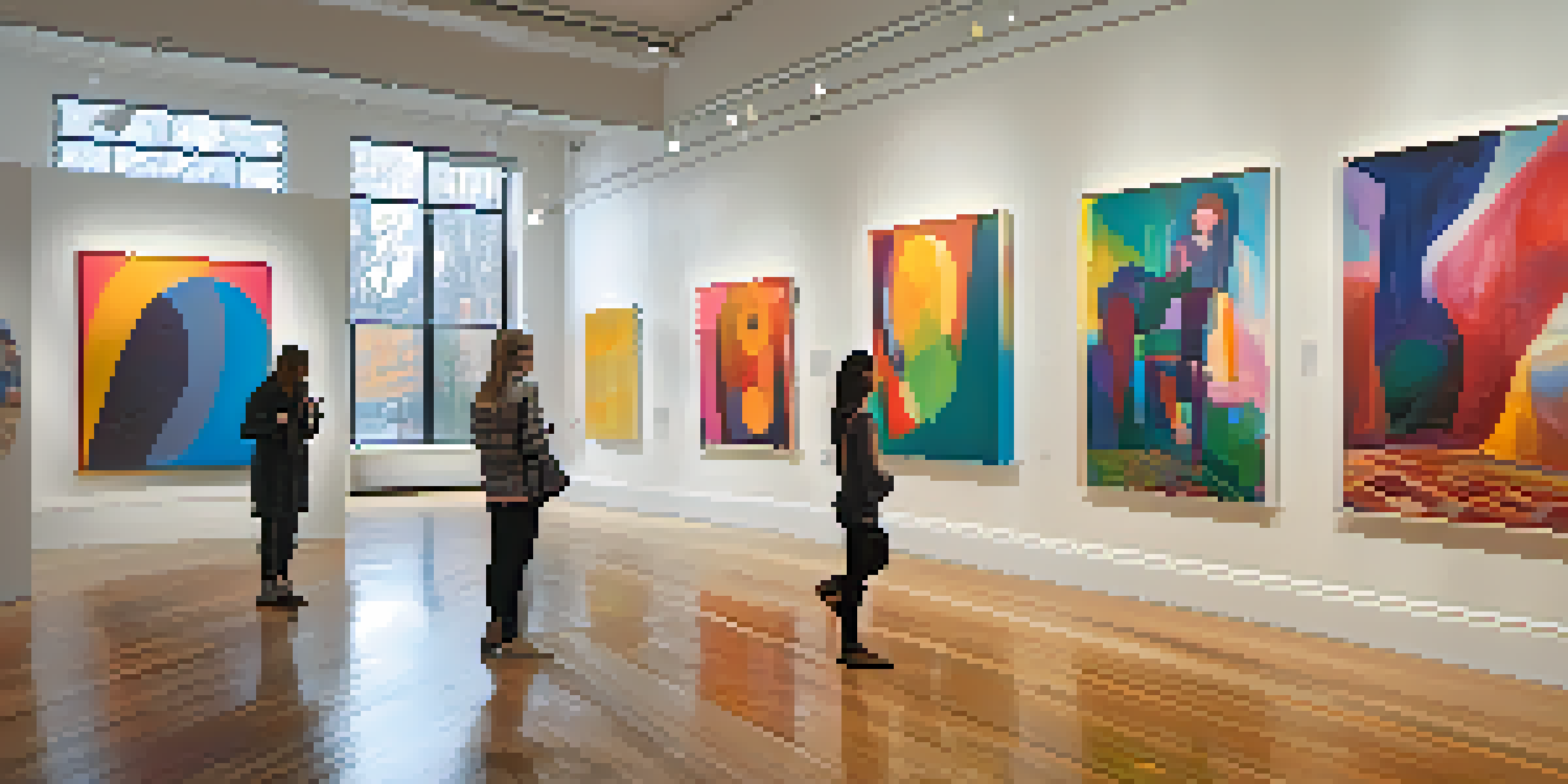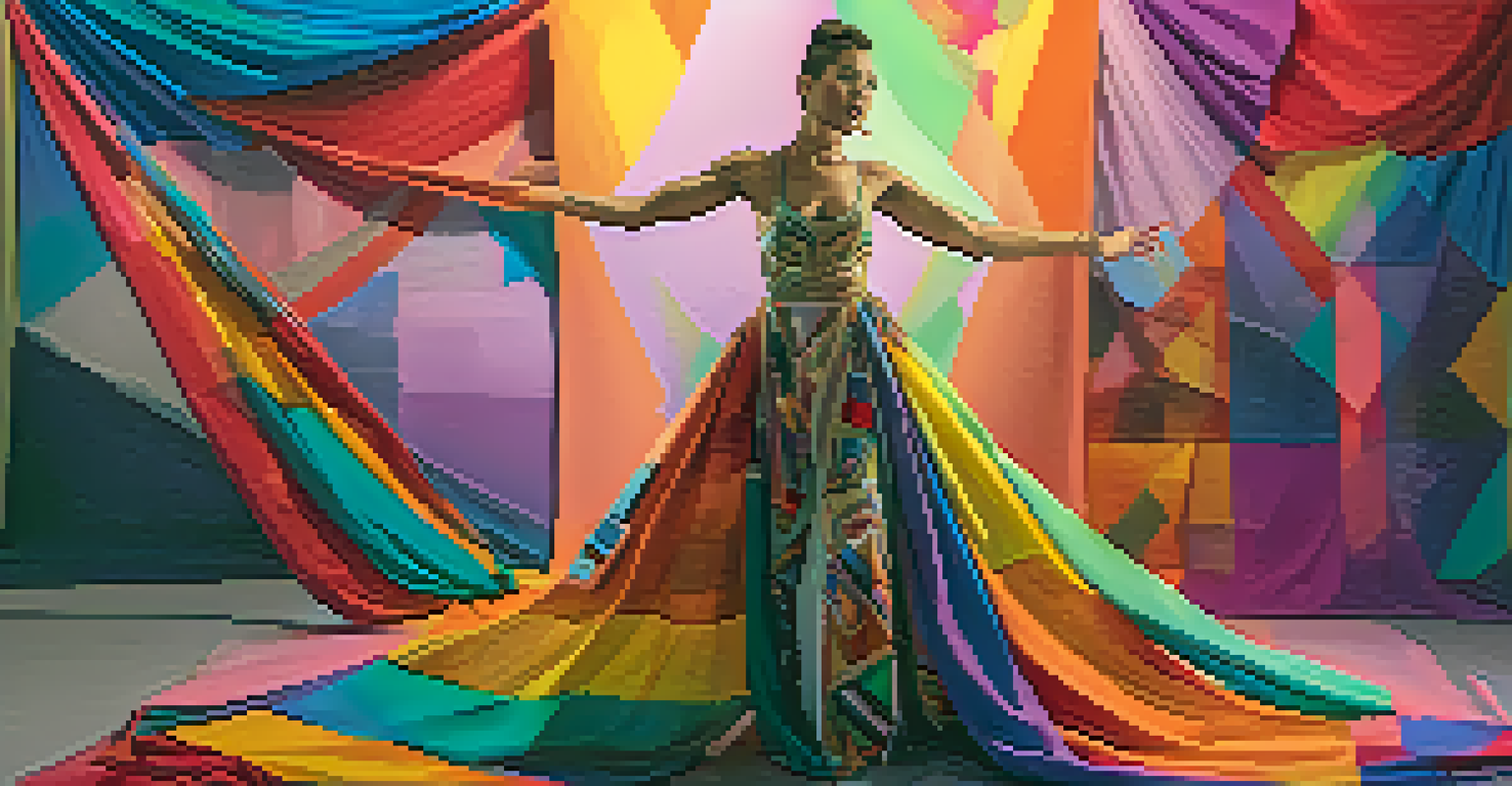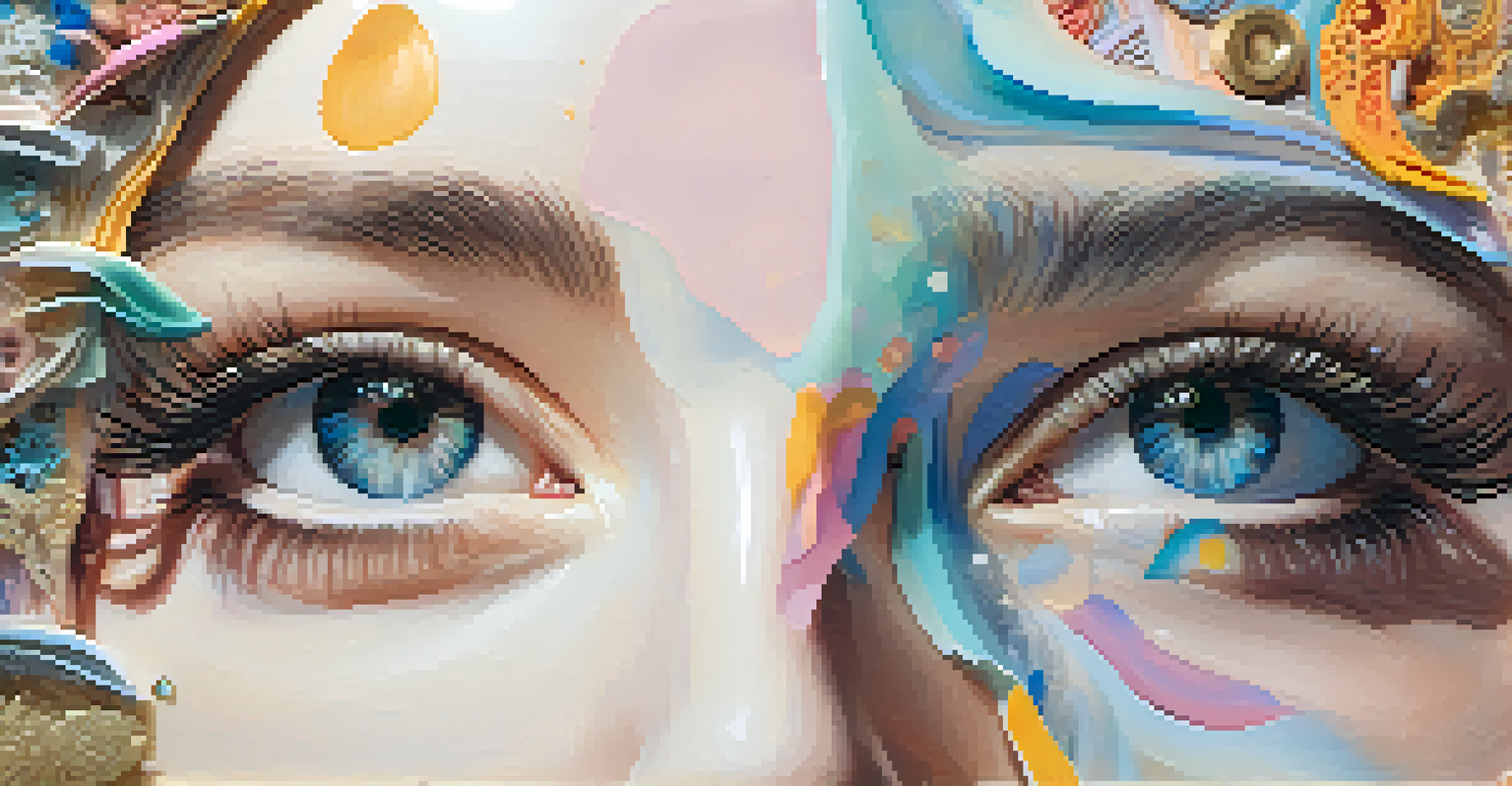Gender Fluidity and Its Representation in Contemporary Art

Understanding Gender Fluidity: A Brief Overview
Gender fluidity refers to a flexible approach to gender identity, where individuals may not exclusively identify as male or female. This concept challenges traditional binary notions of gender, embracing a spectrum of identities. It reflects the understanding that gender can be a dynamic experience rather than a fixed category.
Gender is not something that you are, but something that you do.
The importance of gender fluidity lies in its ability to validate diverse experiences and expressions of identity. Many people find that their gender identity evolves over time, influenced by personal experiences and cultural contexts. Recognizing this fluidity is crucial in fostering inclusivity and acceptance within society.
In contemporary discussions, gender fluidity has gained prominence, influencing various fields, including art. Artists representing gender fluidity not only explore their own identities but also challenge societal norms, encouraging viewers to rethink their perceptions of gender.
The Intersection of Gender Fluidity and Contemporary Art
Contemporary art serves as a powerful medium for expressing and exploring gender fluidity. Artists utilize various forms—paintings, sculptures, performance art—to convey their experiences and challenge societal expectations. This artistic exploration often resonates with audiences, prompting them to reflect on their own views of gender.

One notable example is the work of artist Kiki Smith, who blurs the lines between gender identities in her pieces. Her art often incorporates themes of transformation, inviting viewers to question rigid gender roles. Such representations play a pivotal role in broadening the conversation around gender fluidity within the art community.
Gender Fluidity Challenges Norms
Gender fluidity redefines traditional gender identities, promoting a spectrum that embraces diverse experiences.
Moreover, contemporary art provides a platform for underrepresented voices, allowing gender-fluid artists to share their narratives. This inclusion enriches the art world, fostering a more diverse and vibrant cultural landscape that reflects the complexities of human identity.
Notable Artists Representing Gender Fluidity
Several contemporary artists are making significant waves in representing gender fluidity. One of the most prominent figures is Alok Vaid-Menon, whose work combines poetry and performance to address issues of gender identity and societal norms. Through their art, Vaid-Menon challenges audiences to reconsider the binary view of gender.
Art is a way of expressing oneself, and it can challenge societal norms and provoke thought on issues like gender fluidity.
Another influential artist is Cassils, who uses body sculpting and performance to explore themes of gender and identity. Their work often involves physically demanding performances that push the boundaries of how gender is perceived. This not only captivates audiences but also invites them to engage with the art on a deeper level.
These artists, among others, illuminate the richness of gender fluidity through their diverse expressions. By sharing their personal journeys, they inspire others to embrace their own identities and contribute to a broader understanding of gender in contemporary culture.
Challenges Faced by Gender Fluid Artists
Despite the growing representation of gender fluidity in art, many artists face significant challenges. One primary issue is the lack of acceptance and understanding within the art community and society at large. Some artists report feeling marginalized or misunderstood, which can hinder their creative expression.
Additionally, gender fluid artists may struggle with the commercialization of their work. There's a tension between wanting to maintain authenticity and the pressures of the art market to fit into predefined categories. This can lead to frustration and a sense of alienation from their own art.
Art as a Platform for Expression
Contemporary art serves as a vital medium for gender fluid artists to express their identities and challenge societal expectations.
However, many artists continue to forge ahead, using their experiences to fuel their creativity. By confronting these challenges, they not only contribute to the discourse on gender fluidity but also pave the way for future artists to express their identities freely.
The Role of Galleries and Institutions in Representation
Galleries and art institutions play a crucial role in promoting gender fluidity in contemporary art. By showcasing diverse artists and their work, these spaces help to normalize and celebrate gender fluidity within the art world. This visibility is essential for fostering understanding and acceptance.
Some institutions have begun to implement programs specifically focused on gender diversity, providing resources and support for gender fluid artists. These initiatives can help to create safe spaces for expression and dialogue, encouraging artists to share their stories and experiences.
Moreover, partnering with gender fluid artists can enrich the programming of galleries and institutions, bringing fresh perspectives to their exhibitions. As organizations continue to embrace inclusivity, they contribute to a cultural shift that values and uplifts all identities.
Audience Reception: Engaging with Gender Fluid Art
The reception of gender fluid art can vary widely among audiences. While some viewers may embrace and celebrate these representations, others may struggle to understand or accept them. This divide often reflects broader societal attitudes toward gender and identity.
Art can serve as a catalyst for conversation, encouraging audiences to confront their biases and preconceptions. By engaging with gender fluid art, viewers are invited to explore the complexities of identity and consider perspectives different from their own. This engagement can foster empathy and understanding.
Support is Crucial for Artists
Galleries and institutions play a key role in fostering acceptance and visibility for gender fluid artists, enhancing cultural dialogue.
Education and outreach initiatives can further enhance audience reception. By providing context and facilitating discussions about gender fluidity, galleries can create a more informed and receptive audience, ultimately enriching the cultural dialogue surrounding these important themes.
The Future of Gender Fluidity in Art
As society continues to evolve, so too will the representation of gender fluidity in contemporary art. The growing visibility of gender fluid artists and their work suggests a promising future, one that is increasingly inclusive and diverse. This shift is not only essential for artists but also for audiences who seek to understand the complexities of identity.
Emerging technologies, such as digital art and virtual reality, may open new avenues for expression and exploration of gender fluidity. These platforms can provide innovative ways for artists to engage with their audiences and challenge traditional norms of representation in compelling ways.

Ultimately, the future of gender fluidity in art hinges on ongoing dialogue and collaboration. By continuing to uplift and support marginalized voices, the art world can contribute to a more equitable society, where all identities are celebrated and embraced.